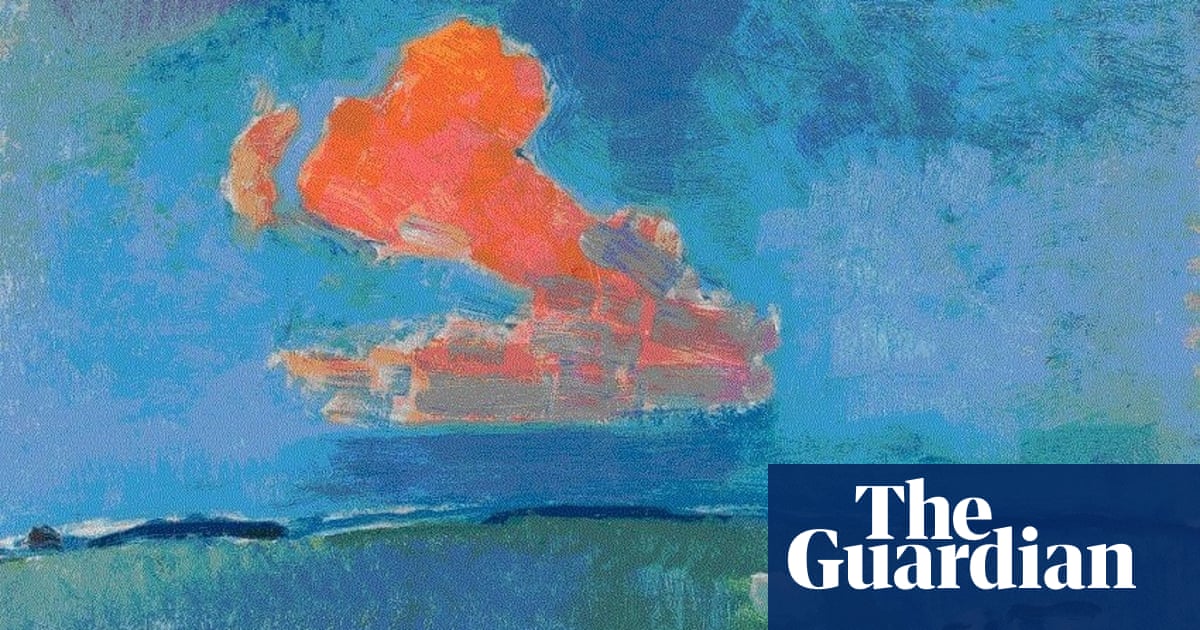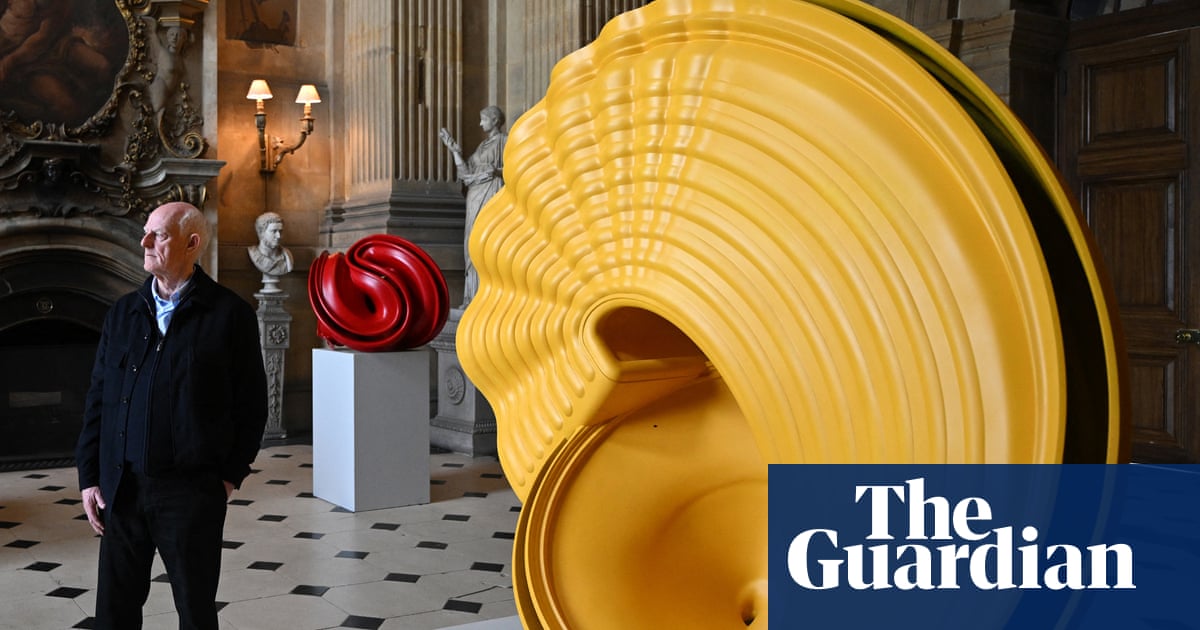
Exhibition of the week
Damien Hirst: Relics and Fly Paintings
The latest exhibition in Hirst’s year-long occupation of this space sees him at his most macabre and death-obsessed, from black paintings made with dead flies to a flayed statue of Saint Bartholomew.
Gagosian Britannia Street, London, until end of 2021.
Also showing
Jimmy Robert: Tobacco Flower
Guadaloupe-born French artist Robert examines the history of the Caribbean through the Hunterian’s rich collections.
Hunterian Art Gallery, Glasgow, until 5 September.
Claudia Andujar
An intimate vision of indigenous Amazon life by this Swiss-born Brazilian photographer and campaigner.
The Curve, Barbican, London, from 17 June until 29 August.
Leilah Babirye
Paintings and ceramics that deal with the artist’s experience of fleeing Uganda because of its anti-gay politics and finding a new community in New York.
Stephen Friedman Gallery, London, until 31 July.
Joe Tilson
Conceptual paintings from the 1970s with a laid-back rustic vibe as the artist gave up on plastic fantastic Pop.
Marlborough, London, from 17 June until 31 July.
Image of the week
Mount Recyclemore, a sculpture made of discarded electronic waste depicting the faces of the G7 leaders, appeared at Sandy Acres beach, just along the coast from Carbis Bay, where the leaders are meeting. About 15 artists helped create the structure over a frantic six weeks at Joe Rush’s scrapyard/studio in south London. Parts were then transported to Cornwall on lorries and put together in situ. It will remain on the beach until Sunday, after which the plan is to set it up at tech business musicMagpie’s headquarters in Stockport, Greater Manchester. Read more here.
What we learned
Anish Kapoor thinks Modi’s bulldozing of India’s parliament buildings is a vanity-fuelled campaign to de-Islamify India
G7 leaders were depicted in Mount Recyclemore, an art installation created from 20,000 pieces of discarded tech
Elusive street artist JR reflected on the fascinating journey that has led him to global fame
London’s bars, cafes, bookshops and hair salons inspired this year’s Serpentine Pavilion
Meiro Koizumi seared Japanese atrocities in China in the memory with an unflinching work for Artes Mundi 9
A ghostly outline uncovered the secret of Modigliani’s lost lover …
… while six portraits commissioned by English Heritage revealed hidden histories of the African diaspora in England
Lost gloves took Nick Cave on a photographic journey
Liam Curtin asked Blackpool council to demolish his seafront sculpture over safety fears
Claudia Andujar created magical images with Brazil’s Yanomami tribe
Terry Farrell is out to transform city planning with an “urban room” in Newcastle
A Keith Haring mural in a Barcelona building slated for demolition will be saved …
… while an exhibition of Raphael tapestries in Madrid had some unexpected feathered visitors
A new film paints a fascinating picture of the story behind Van Gogh’s sunflowers
John Topham captured England at war, work and play from the 1920s to the second world war
Tove Jansson’s love of nature shaped the world of the Moomins
Lofty comments on sustainability at London’s Design Biennale were offset by the Kingston Cycle Hub’s more practical step
Polly Braden zoomed in on the unique joys and frustrations of single parents
Bright colours and geometric buildings make sunlit Santa Fe an eye-catching subject …
… while Will Eades stormy photography is just as spectacular
London’s Victorian drinking fountains are in the midst of a restoration battle
Ernest Withers took viewers to the record stores, picket lines and proms of the American south during the 1940s, 50s and 60s …
… though he was later revealed to be an informant for the FBI
Australian artists are taking risks in their depictions of Black tenderness
Mural painter Colin Failes died aged 73
Masterpiece of the week
Master of the Saint Bartholomew Altarpiece, The Deposition, c1500-1505
This deliberately shocking northern Renaissance painting, probably made for praying in private rather than being installed in a church, wants to make you feel the horror of Christ’s fate. His grey broken body is not beautified. It is a brutal image of unadulterated death. Soon decay will set in. Already the flesh is bloodless and emaciated. You are urged to feel the same compassion for this tortured and judicially murdered man as his mourners in the picture. And it works, whatever your beliefs or lack thereof. This kind of harrowing religious art seems to us very north European but Italian artists were already imitating and reinventing the gothic agonies we see here – most powerfully, Michelangelo in his Pieta.
National Gallery, London.
Don’t forget
To follow us on Twitter: @GdnArtandDesign.
Sign up to the Art Weekly newsletter
If you don’t already receive our regular roundup of art and design news via email, please sign up here.
Get in Touch
If you have any questions or comments about any of our newsletters please email newsletters@theguardian.com












